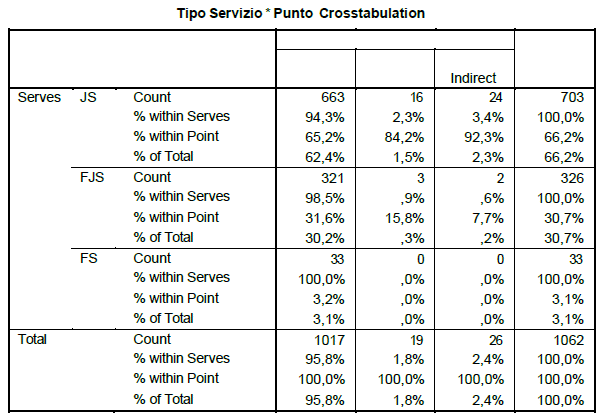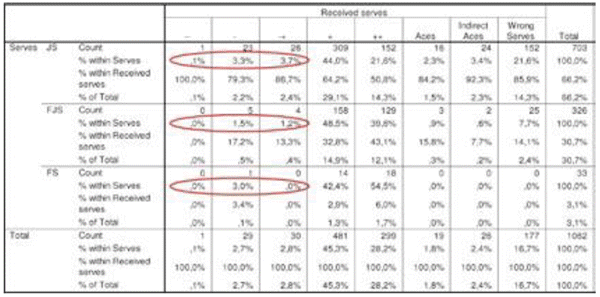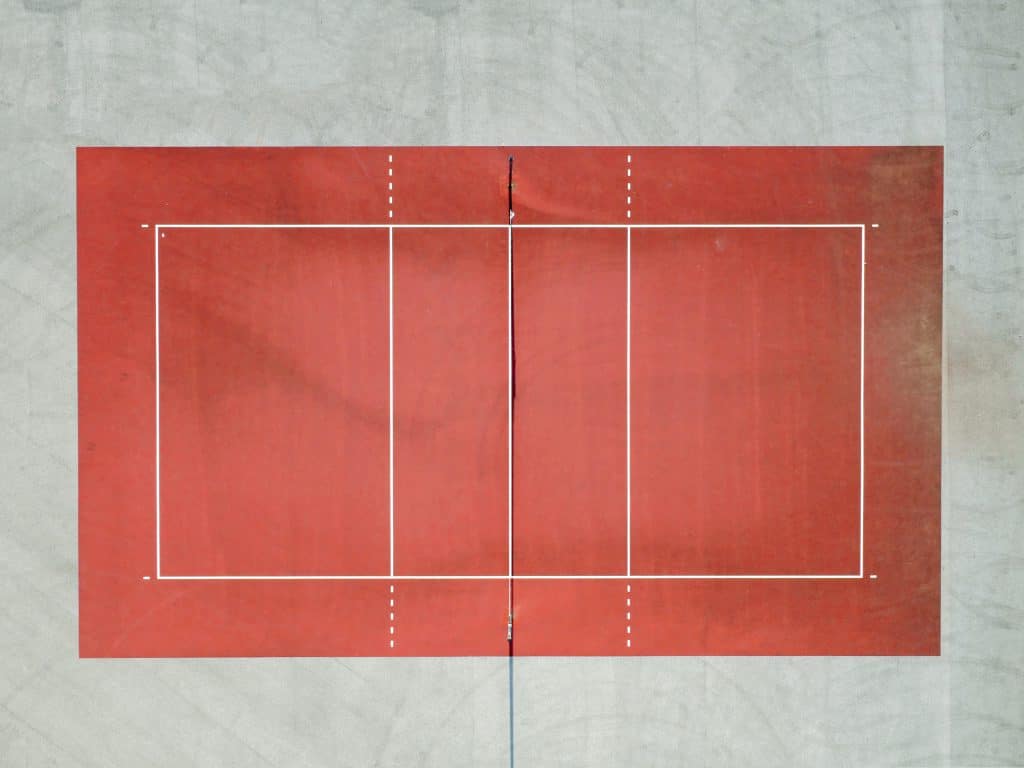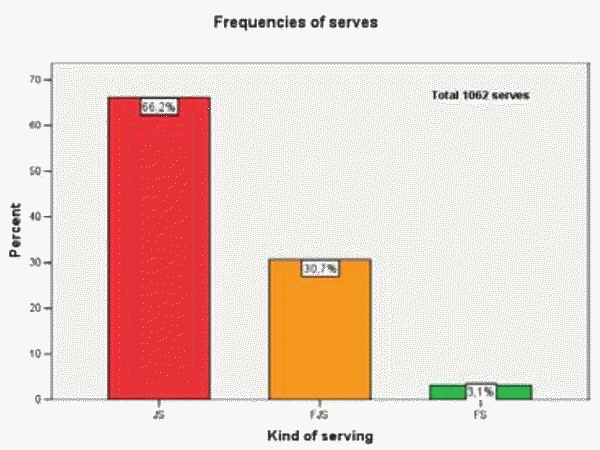This study by Ciuffarella Andrea, Masedu Francesco, Russo Luca and De Angelis Marco from the Human Movement and Sport Science Faculty, University of L’Aquila – Italy, used Dartfish Tagging to produce a statistical breakdown of the effectiveness of serve type in volleyball. The use of Tagging enables greater accuracy than transitional statistical notation methods and makes it simple to mark the specific serve criteria being observed.
Introduction
In volleyball it is possible to discriminate three different styles of serving: Jump serve (JS), Float Jump serve (FJS) and Float Serve (FS). A recent study (1) compared these three styles in terms of effectiveness and speed, but the analyzed sample was very small (4 teams for an amount of only 377 serves from 4 games). The aim of this study was to better investigate the effectiveness of serving modalities in a larger sample of serves.
Methods
Fourteen teams of the Italian male top series were analyzed in 7 official games for an amount of 1062 serves. Player’s role, serve type (JS, FJS, FS), defense opponent’s strategy, serve target zone, receiver’s evaluation and serve outcome were analyzed through Dartfish video analysis software. Statistical analysis of frequencies was performed.
Results
The 1062 serves showed that: JS was used 66.2%, FJS 30.7%, FS 3.1% of total serves

Direct aces and indirect aces from JS were respectively 2.3% and 3.4%, from FJS were 0.9% and 0.6%, from FS were both 0%

Wrong serves were 21.6% for JS, 7.7% for FJS and 0% for FS (table. 3).
Bad received serves were 7.1% for JS, 2.7% for FJS and 3% for FS (Tab.3 in red).

Discussion
Compared to the only previous study (1.) on the same topic, the results of the present one, on a much bigger sample, are deeply different. Results underline the greater use of the JS compared to the other styles, but, at the same time, this technique is clearly more risky than the other ones in terms of wrong serves. It has to be added that the benefits of JS, compared to the FJS or to the FS technique, in terms of direct and indirect aces or in terms of bad opponent received serves, are not so big as it is traditionally supposed.
References
1. Moras G. et al. J Sports Med Phys Fitness. 2008, 48:31-36.


Comments are closed.